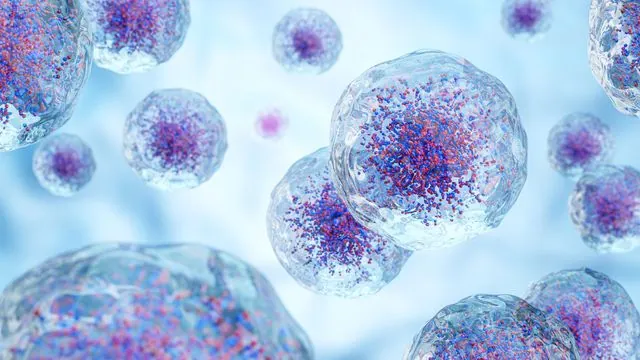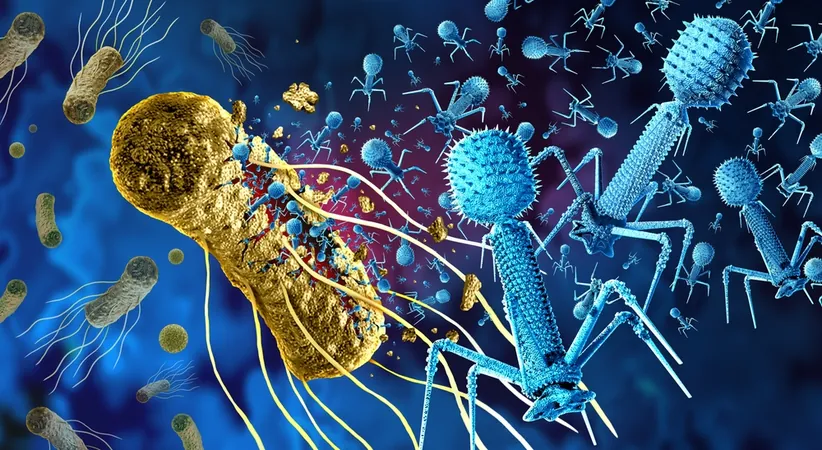
Unlocking the Secrets of Cell Movement: A Game-Changing Discovery from UMBC
2025-06-03
Author: Nur
Imagine tiny cells charting their own complex paths, guided by invisible chemical signals in their environment. At the University of Maryland, Baltimore County (UMBC), a pioneering team of researchers has made a groundbreaking discovery that could revolutionize our understanding of how cells move, with significant implications for diseases like cancer.
Breakthrough Study Published in iScience
The findings, published in the prestigious journal iScience, combine advanced biological experiments with sophisticated mathematical modeling. Led by Alex George, Ph.D. ’24, and Naghmeh Akhavan, Ph.D. ’25, this dynamic duo has examined how border cells within fruit fly egg chambers navigate their surroundings, paving the way for potential breakthroughs in medical treatments.
Mathematics Meets Biology for New Insights
Through cutting-edge imaging and mathematical simulations, the team uncovered that a cell's movement is not solely dictated by chemical signals—known as chemoattractants—but also heavily influenced by the unique physical shapes of the tissues they traverse. “This study is a fantastic example of how interdisciplinary collaboration can reveal hidden patterns in cell migration,” Peercy emphasized, highlighting the innovative merging of math and biology.
Following the Trail: A Cell's Journey
The research honed in on border cells in fruit fly egg chambers, which serve as a crucial model for understanding human development and disease. Unlike previous models which suggested a simple gradient of increasing chemical concentrations, the study proved that the tissue's geometry—narrow tubes alternating with wider gaps—plays a pivotal role in guiding cell movement.
George likened the cells' navigation to Hansel and Gretel following breadcrumbs: on a flat terrain, the path is straightforward, but in a complex landscape, the trail can become convoluted and misleading.
Complex Interactions: Cells in Motion
Akhavan's mathematical models revealed that cells accelerate in narrow channels and decelerate in wider spaces, a pattern that George's live imaging corroborated. Their collaboration created a synergistic effect—each discipline refined the other’s findings, leading to a more comprehensive understanding of cellular mechanics.
Navigating Language Barriers in Science
The collaboration wasn't without its challenges; bridging the gap between mathematics and biology required both researchers to learn each other's 'languages.' Akhavan fondly recalled her initial struggles, while both expressed how their partnership flourished over time, fostering not just academic growth but a strong friendship.
Implications Beyond Developmental Biology
The study's impact extends beyond biology, offering insights into critical processes such as wound healing and cancer metastasis. “This research is groundbreaking; it’s one of the first to analyze the interplay between chemical signals and structural influences on cell behavior,” Starz-Gaiano stated.
A Bright Future for Research
George, who has honed his microscopy skills at the university’s Keith R. Porter Imaging Facility, is now set to continue his research journey at the Dartmouth Cancer Center. Meanwhile, Akhavan plans to carry forward her innovative models into her dissertation work.
As they continue to explore the complexities of cell movement with advanced techniques at facilities like the Janelia Research Campus, the team is eager to unveil even more secrets of cellular navigation.
Exciting Opportunities on the Horizon
Looking ahead, the collaborative spirit at UMBC inspires the research team as they develop new experimental strategies to push the boundaries of what we understand about cell migration. This work promises to not only deepen our knowledge but also potentially inform revolutionary medical treatments.





 Brasil (PT)
Brasil (PT)
 Canada (EN)
Canada (EN)
 Chile (ES)
Chile (ES)
 Česko (CS)
Česko (CS)
 대한민국 (KO)
대한민국 (KO)
 España (ES)
España (ES)
 France (FR)
France (FR)
 Hong Kong (EN)
Hong Kong (EN)
 Italia (IT)
Italia (IT)
 日本 (JA)
日本 (JA)
 Magyarország (HU)
Magyarország (HU)
 Norge (NO)
Norge (NO)
 Polska (PL)
Polska (PL)
 Schweiz (DE)
Schweiz (DE)
 Singapore (EN)
Singapore (EN)
 Sverige (SV)
Sverige (SV)
 Suomi (FI)
Suomi (FI)
 Türkiye (TR)
Türkiye (TR)
 الإمارات العربية المتحدة (AR)
الإمارات العربية المتحدة (AR)